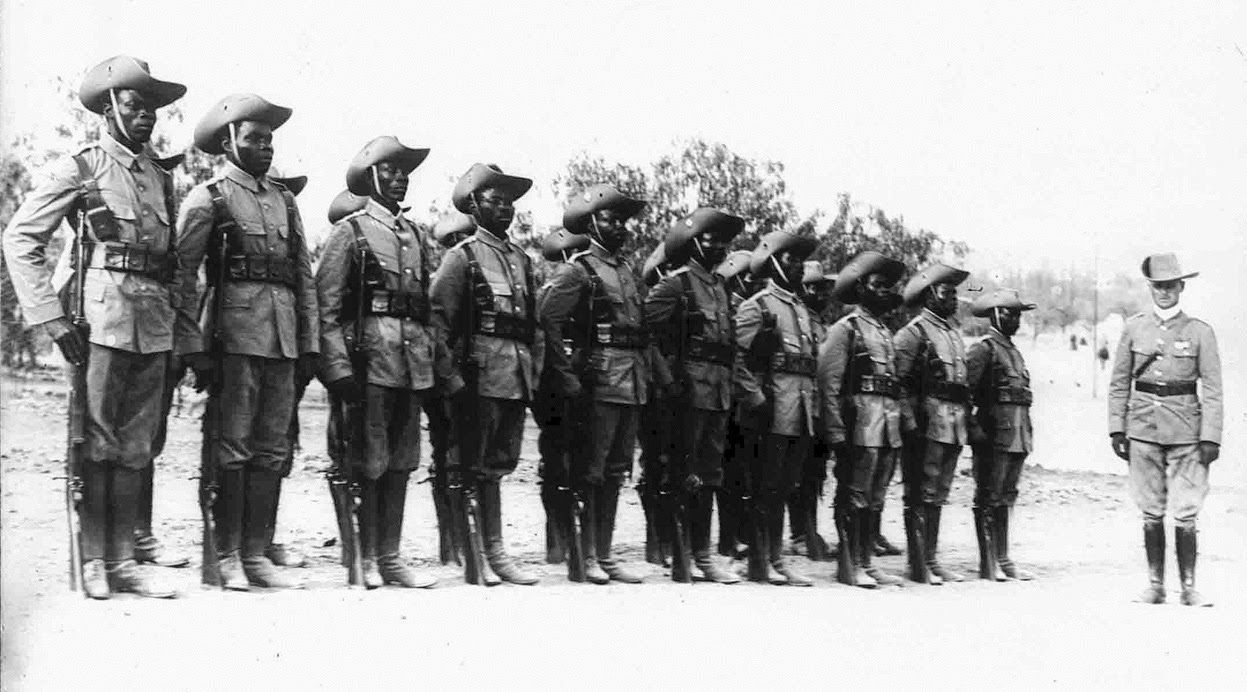Museums in Namibia are developing an education project with UK support to highlight how the First World War shaped the country’s history.
Forces from South Africa, then part of the British Empire, crossed the border to occupy the German colony of South-West Africa (present-day Namibia) in 1915.
The British High Commission (embassy) in Windhoek has signed an agreement with the Museums Association of Namibia to fund a mobile exhibition documenting the impact of this ‘forgotten’ campaign on local communities.
It will be launched at an event in northern Namibia on July 9th 2015 marking the 100th anniversary of the German surrender to the South African commander, and also Prime Minister, Louis Botha.
The exhibition is being developed in partnership with a team of students from the University of Namibia’s History Society.
People who might have historical photographs, documents or artefacts relevant to the South-West Africa campaign are being urged to get in touch.

The role of German colonial forces (Schutztruppe) in South-West Africa, such as this unit from Cameroon, will feature as part of the Namibia exhibition (Photo: Koloniales Bildarchiv Frankfurt am Main)
Students will visit some of the commemorative sites associated with the war before launching the exhibition. Battles ranging from Sandfontein, where the Germans enjoyed an early success in 1914, to Trekkopies and Gibeon will be featured.
The South African invasion didn’t get under way in earnest until 1915 because of a revolt by Afrikaner officers still resentful of their defeat against the British in the Boer war.
The Museums Association of Namibia (MAN) notes: “World War One changed Namibian history forever. German colonial rule ended, but was replaced by a South African occupation that would last for seventy-five years.”
South-West Africa came under South African administration as a League of Nations mandate after the First World War. Legal disputes over control of the territory culminated in a protracted liberation war and independence for Namibia in 1990.
Britain’s High Commissioner in Windhoek, Marianne Young, expressed her appreciation for the exhibition project at a ceremony to mark the funding deal on April 7th 2015.
She commented: “Throughout 2015, the First World War Centenary is being commemorated globally. I am pleased that the British High Commission is able to support the Museums Association of Namibia’s work to highlight the centenary locally and educate young Namibians, in particular, on the impact of these events on Namibia’s history.”
The MAN project organisers can be contacted at museums@iway.na. They’re appealing in particular for good quality photographs. Materials can be scanned or photographed for possible inclusion in the exhibition if members of the public do wish to donate them.
Information & images supplied by British High Commission Windhoek; Museums Association of Namibia (Schutztruppe courtesy of Koloniales Bildarchiv Universitätsbibliothek Frankfurt am Main)
Additional information: Wikipedia/various
Posted by: Peter Alhadeff, Centenary News
